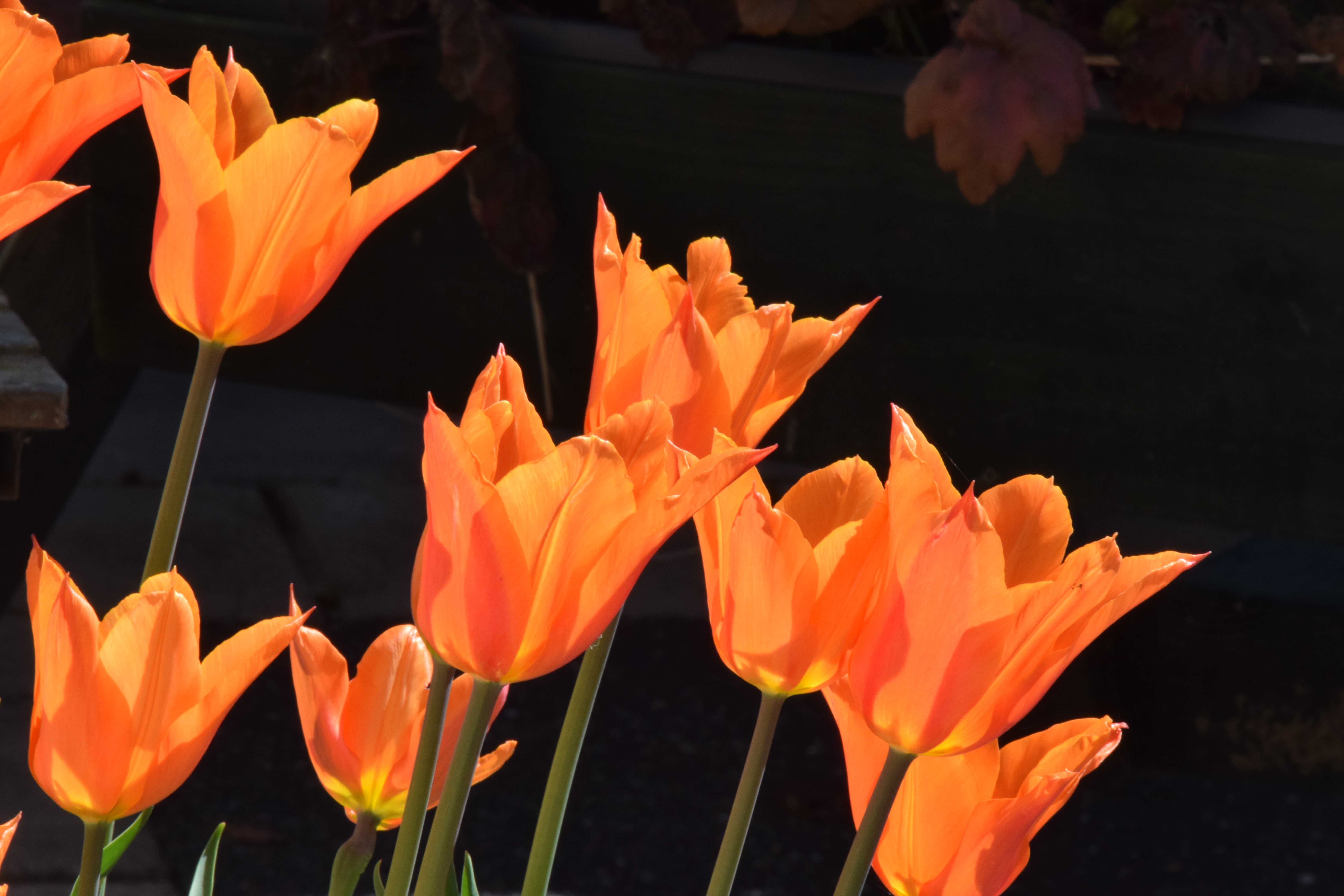
Spring seems a long way off right now and soon our attention will be consumed by other (festive) thoughts, though things will be different this year. We need to focus on good thoughts and nothing lifts the spirits quite like spring bulbs. Most of these should be planted by now, though I confess I still have a few daffs to plant as soon as the ground dries out a bit. But this is the perfect time to plant tulips so whether you bought some earlier or can get out to buy some. Planting tulips is the perfect feel-good job to get you outside on a sunny day.

There are two ways to plant tulips – normally or deeply. Tulips are unusual in the way that the bulbs break up after flowering. The bulb you plant disappears and is replaced by several more. If the bulbs are planted about 8cm deep they tend to break up into many, small bulbs, most of which will not be of flowering size. If you plant much deeper, at about 20cm, they tend to make fewer bulbs, with one large bulb that will bloom the next year and a few small bulbs.
If you are planting in pots and troughs and do not care if they bloom the next year then shallow planting is fine. But if planting in the border where you want them to grow and bloom every year then you need to plant deeply. This means they are less likely to get damaged by later soil cultivation and will bloom for several years undisturbed. It is best to plant with a spade, taking out a large hole and spacing the bulbs at the base. For general bedding just plant as deep as your trowel allows and then lift them the following June, discard the small bulbs and keep the largest.

Unlike daffodils, tulips are best lifted every year and stored dry, but it is not essential. How many years a clump of tulips will bloom depends on a lot of factors. Tulips prefer a light, well drained soil and need a sunny site. On heavy soils, winter wet and a large slug population will cause damage. Even so, different types and varieties vary in how well they do in the average garden. I find that most lily-flowered tulips, viridiflora tulips, Fosteriana and Greigii types last the longest. I find that the early single and doubles are the worst. But you may have different results.

When planting in containers, pack in the bulbs so they make a good display. In the border you can put them as far apart as 20cm but they always look best when used generously. Unless you have large containers, where tall tulips can look spectacular if they are packed in, I would choose smaller kinds so they do not look spindly and out of proportion. Once you have planted your tulips, plant the top of the compost with bellis, violas or forget-me-nots for a longer show of colour.

Jobs for the week
Order your seeds before the spring rush
Rake up fallen leaves and compost them
Cut down summer-fruiting and autumn-fruiting raspberries
Move deciduous shrubs and plant bare-root trees and shrubs